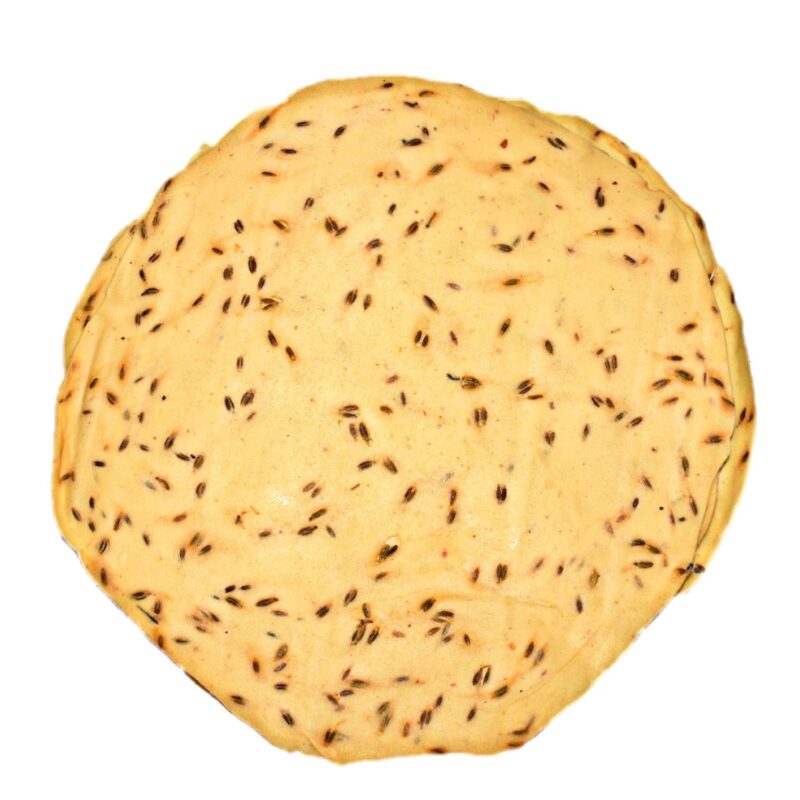Amritsari papad is a popular Indian snack that originates from the city of Amritsar in the state of Punjab. It is a thin, crispy, and disc-shaped flatbread made primarily from urad dal (black gram lentils) flour. The process of making Amritsari papad involves a few key steps:
1) Preparation of Urad Dal Paste: Whole urad dal is soaked in water for a few hours and then ground into a smooth paste. This paste serves as the primary ingredient for making the papads.
2) Seasoning: The urad dal paste is seasoned with a mixture of spices such as black pepper, cumin seeds, asafoetida (hing), and sometimes red chili powder for an extra kick of heat. This seasoning not only imparts flavor but also aids in digestion.
3) Rolling and Drying: Small portions of the seasoned urad dal paste are spread thinly and evenly onto a flat surface or tray. The papads are then sun-dried or air-dried until they become completely firm and brittle. This step is crucial as it removes all moisture from the papad, ensuring crispiness upon frying.
4) Frying: The dried papads are deep-fried in hot oil until they puff up and turn golden brown. Due to their thinness, they cook quickly and need careful attention to prevent overcooking or burning.
5) Serving: Amritsari papads are typically served as an accompaniment to meals, adding a delightful crunch and flavor. They are commonly enjoyed with various Indian dishes, chutneys, pickles, or as a standalone snack.

6) Variations: While the traditional Amritsari papad recipe is made with urad dal, there are also variations that incorporate other lentils and ingredients like moong dal (green gram lentils), rice flour, and even added flavors such as mint or garlic.
Amritsari papads are known for their distinctive taste and crunchiness, making them a popular choice among snack enthusiasts and a staple in many Indian households. They offer a unique combination of flavors from the spices used in the seasoning and the rich nuttiness of the urad dal, making them a delightful addition to any meal.
Uses of Papad in Indian Cooking:
• Papads are typically served as an accompaniment to a meal in India.
• It is also eaten as an appetizer or a snack and can be eaten topped with various toppings such as chopped onion, chutney or other dips and condiment
• Papad can be munched on as a snack with tomato catchup.
• It may be served with soup or the main meal
• It is often crushed and sprinkled on rice
• Traditional Indian Thali or platter always include papad
• Papads are usually deep-fried for special occasions

How to store papad:
• Store in a cool and dry place.
• Always tie the rest packet with a rubber band or in airtight containers for at least one year.
• It’s always better to purchase small packets and purchase regularly as described.
Health Benefits of Papad:
• They are low calorie, gluten-free, high fibre, high protein accompaniment or snack.
• They promote the growth of good bacteria in the gut, i.e. act as a probiotic that supports digestion and assimilation of the macro and micronutrients from your food.
• Papad enhance the secretion of digestive enzymes and juices which are essential for metabolism and hence act as a digestive
• It is not recommended as part of the daily meals.
• Moderate intake is fine, but do not overdo it. Prefer to roast it occasionally. Also, check the unique collection of papad







